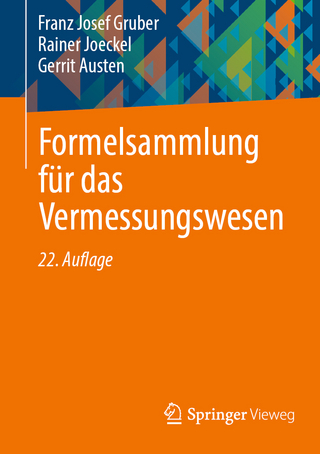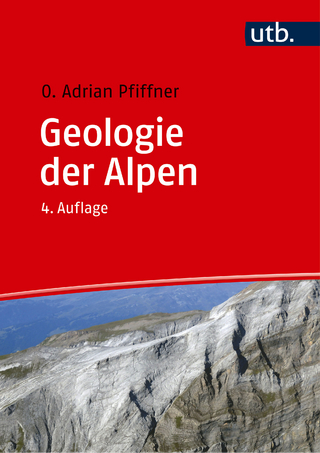
Fractal Geometry in Human Geography and Planning
Iste Ltd (Verlag)
978-1-78945-159-7 (ISBN)
The first part of the book is devoted to the basic concepts and geometric reference figures required for fractal analysis in human geography. In the second part, the principles of four major families of analysis methods are explained in detail: fractal analyses of point sequences, fractal methods for morphological delineation of urban agglomerations, multifractal analyses and cross scale signatures. The third part of the book is devoted to applications of fractal geometry in urban and regional planning.
Cécile Tannier is Senior Researcher in geography and planning at the ThéMA laboratory, France. Her main areas of research are location dynamics in urban settings, the shape of cities and dynamic modeling of settlement systems.
Introduction xi
Cécile TANNIER
Part 1. Basic Concepts and Reference Figures 1
Chapter 1. Introduction to Fractal Analysis and Modeling in Human Geography 3
Cécile TANNIER and François SÉMÉCURBE
1.1. Geometric models of the spatial distribution of human settlements: from the use of smooth and regular shapes to the adoption of fractal shapes
Chapter 2. Basic Concepts for Fractal Analysis and Modeling in Human Geography 23
Cécile TANNIER
2.1. Methods of construction of fractal figures
2.2. Measuring the size of fractal and non-fractal objects 36
2.3. Definition of a fractal object 39
2.4. Density and fractal dimension 40
2.5. Mathematical fractals versus fractals in the real world 44
2.6. Fractality and scale invariance 48
2.7. References 51
Chapter 3. Fractal Reference Figures 55
Cécile TANNIER
3.1. Fractal curves and islands 56
3.2. Fractal dusts, gaskets and carpets 58
3.3. Hybrid fractal figures and multifractal figures 66
3.4. Fractal geometric models of central places 77
3.5. Concerning lacunarity 81
3.6. Conclusion 85
3.7. References 86
Part 2. Fractal and Multifractal Analyses of the Spatial Distribution of Human Settlements 91
Chapter 4. Fractal Analysis Methods for Characterizing the Spatial Distribution of Human Settlements 93
Cécile TANNIER, Gaëtan MONTERO, François SÉMÉCURBE and Isabelle THOMAS
4.1. Estimating the fractal dimension of a collection of human settlements (point, linear or surface objects) 94
4.2. Fractal box-counting and correlation analyses of 50 built-up fabrics 113
4.3. Conclusion 141
4.4. References 142
Chapter 5. Morphological Delineation of Urban Agglomerations: Comparison of Fractal and Non-Fractal Methods 147
Gaëtan MONTERO, Cécile TANNIER and Isabelle THOMAS
5.1. Comparison of three fractal and non-fractal methods of morphological delimitation of cities 148
5.2. Morphological characterization of cities delimited by means of MorphoLim within 82 French urban areas 167
5.3. Conclusion 189
5.4. References 189
Chapter 6. Multifractal Analyses of Population Distributions 197
François SÉMÉCURBE and Cécile TANNIER
6.1. Introduction 197
6.2. Theoretical presentation of multifractal analysis 199
6.3. Application to the study of the spatial distribution of the population 208
6.4. Conclusion and perspectives 216
6.5. References 217
Chapter 7. Characterizing Deviations from Scale Invariance Using Cross-Scale Signatures 221
François SÉMÉCURBE and Cécile TANNIER
7.1. Cross-scale signatures: a tool for exploring deviations from scale invariance 223
7.2. Synthesizing the information provided by cross-scale signatures 228
7.3. Conclusion 238
7.4. References 238
Part 3. Urban Forms and Fractal Planning 241
Chapter 8. Principles of Fractal Planning and Urban Design 243
Cécile TANNIER
8.1. Hypotheses about the functional advantages of fractal built and non-built forms 244
8.2. Fractal planning standards: between myths and realities 254
8.3. Why and how to introduce fractal geometric rules into geographic models of urban and regional planning? 258
8.4. Conclusion 267
8.5. References 269
Chapter 9. Multifractal Forward Planning: The Fractalopolis Model Applied to the Case of Greater Paris 277
Pierre FRANKHAUSER and Olivier BONIN
9.1. Planning for accessibility: reducing distances traveled and organizing urban centers 279
9.2. Integrating green and blue infrastructure into a planning process 283
9.3. Fractalopolis: a multi-scale development model 291
9.4. Example of application: from Greater Paris to the Est Ensemble sector 311
9.5. Conclusion 326
9.6. References 328
Conclusion 335
Isabelle THOMAS
List of Authors 339
Index 341
| Erscheinungsdatum | 21.08.2024 |
|---|---|
| Reihe/Serie | ISTE Invoiced |
| Verlagsort | London |
| Sprache | englisch |
| Themenwelt | Naturwissenschaften ► Geowissenschaften ► Geografie / Kartografie |
| ISBN-10 | 1-78945-159-0 / 1789451590 |
| ISBN-13 | 978-1-78945-159-7 / 9781789451597 |
| Zustand | Neuware |
| Haben Sie eine Frage zum Produkt? |
aus dem Bereich


